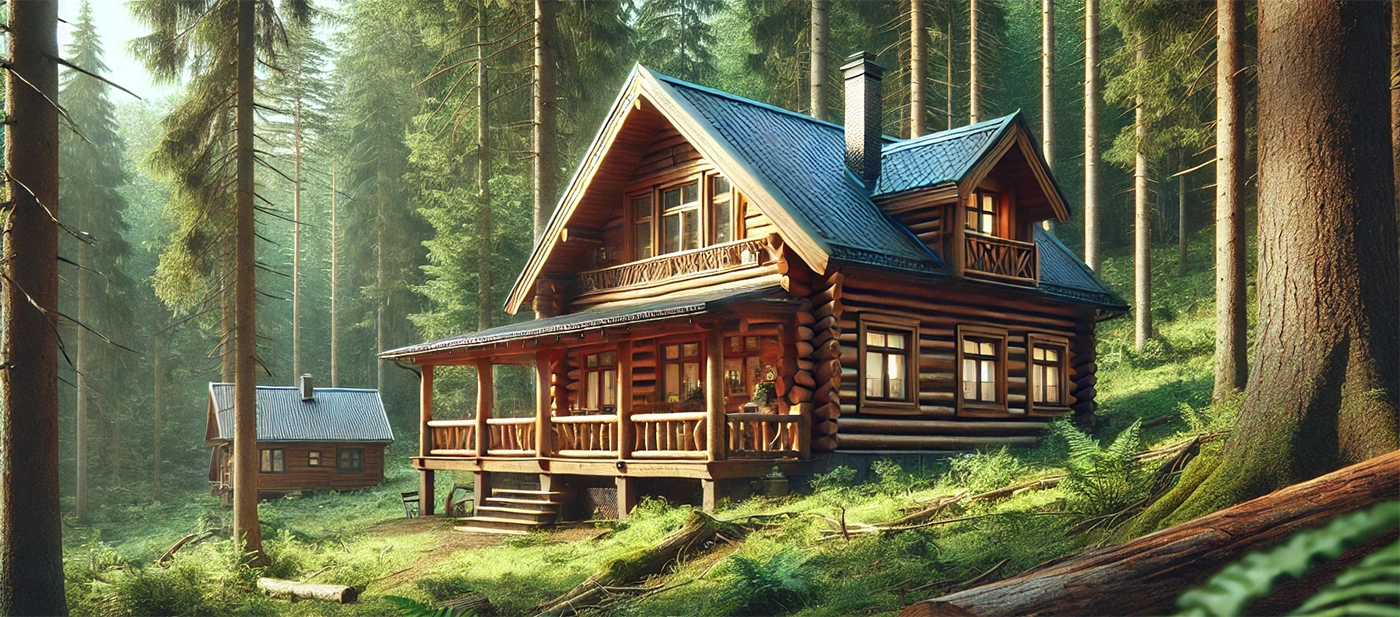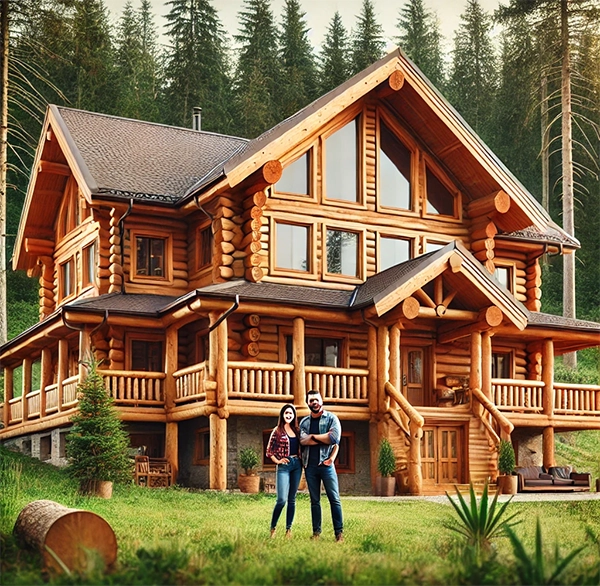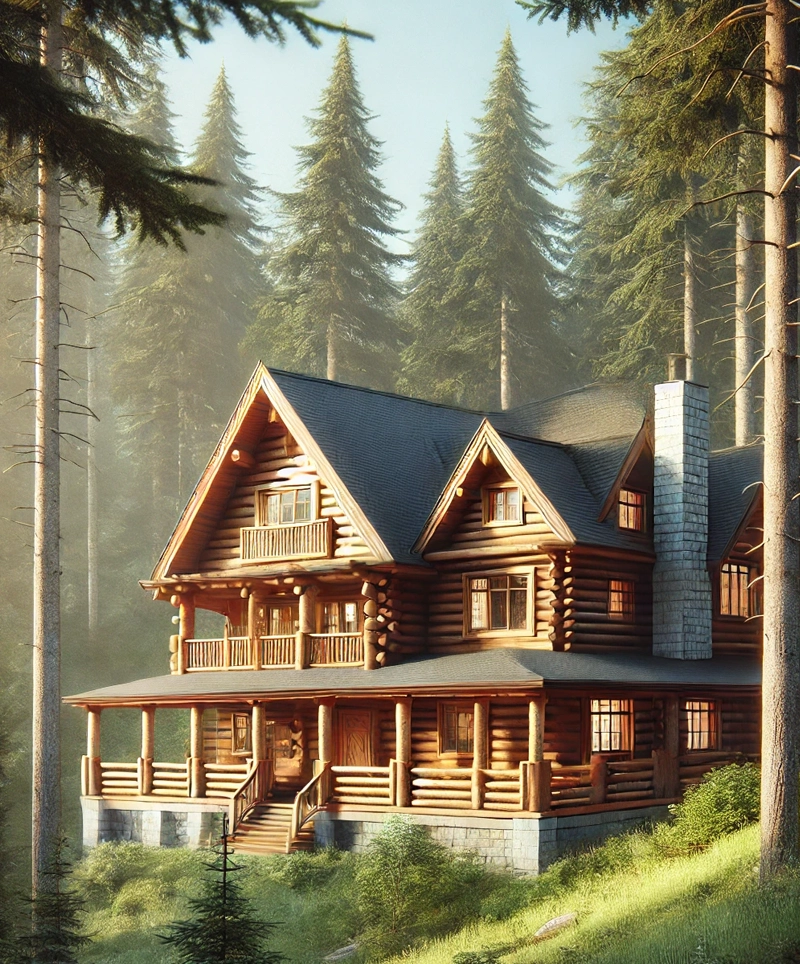A Rustic Retreat into History
Every year, on the last Sunday in June, we dust off our DIY spirit, throw on a flannel shirt, and tip our imaginary pioneer hats to a humble American icon: the log cabin. It’s Log Cabin Day! This quirky holiday invites us to step back in time and savor the simple, charming, and occasionally drafty life of our frontier forebears. Whether you're a history buff, a cabin enthusiast, or just someone who thinks splitting logs sounds like a workout, Log Cabin Day has a little something for everyone.
The History of Log Cabins
Log cabins may seem like a symbol of rustic Americana, but their origins lie across the Atlantic. Dating back centuries, these sturdy structures were already a staple in Sweden, Finland, and Eastern Europe, where forests provided ample building materials and people knew a thing or two about enduring cold winters.
When settlers from Sweden and Finland arrived in North America in the 1600s, they brought their knowledge of log cabin construction with them. These newcomers found a wilderness rich in resources but with a few modern conveniences missing (like, you know, walls). So, they set to work crafting homes out of what they had most of: trees.
Using a straightforward yet ingenious technique, the settlers stacked logs horizontally, notched at the ends to fit snugly together without the need for nails. The result was a solid, weather-resistant structure that could be assembled relatively quickly—assuming you didn’t mind a sore back. This “DIY” approach fit well with the frontier spirit, and log cabins soon became essential to survival and settlement in the vast, untamed American wilderness.
As settlers spread westward, the log cabin became an enduring symbol of self-reliance and the pioneering spirit, reflecting the grit of early American life. Its legacy grew from there, becoming embedded in the national psyche as a symbol of humble beginnings and hard-won success—particularly for figures like Abraham Lincoln, who was born in a one-room log cabin. Thanks to the influence of historical icons, the log cabin went from being a practical shelter to an enduring emblem of American identity and rugged independence.

Building a Log Cabin
Building a log cabin isn’t for the faint of heart. Picture yourself wielding an axe, not for show but for survival, and you’re halfway there. Here’s how pioneers pulled it off:
-
Selecting the Site: First, you’d scout for high ground with good drainage. Pioneers didn’t have basements, and no one wanted a waterlogged cabin. Bonus points if you find a site with a view of, well, trees.
-
Gathering Logs: Next, you'd be sizing up trees with a discerning eye, like a lumberjack-turned-interior designer. Pine, spruce, and cedar were popular, but really, any tree that wasn’t giving you trouble worked just fine. (Yes, there was a reason pioneers were muscled!)
-
Notching the Logs: Here's where the cabin carpentry comes in. Each log had to be notched to fit together snugly—like the ultimate jigsaw puzzle, but every piece weighs several hundred pounds.
-
Stacking the Logs: Logs were laid in a crisscross pattern to create the walls. Think Lincoln Logs but on a life-sized scale, where one misplaced log could ruin your week.
-
Adding the Roof: Finally, it was time to put on the roof, which often included thatch, shingles, or more logs. Thatch added character, shingles kept it classy, and logs… well, logs were for the bold.
Life in a Log Cabin
Once the cabin was up, life could officially get underway—rustic style. Furniture was handmade, meals were cooked over open flames, and insulation was courtesy of mud or clay packed between the logs. (Drafty doesn’t begin to cover it.) Early cabin life was all about making do, staying warm, and finding joy in little things, like the neighbor’s visit with actual sugar.
 Yet, life wasn’t all work. Raising a log cabin was a community event, a social spectacle complete with feasting, laughter, and, if you were lucky, maybe even some fiddle music. It turns out, even the toughest pioneers knew how to throw a barn-raising bash.
Yet, life wasn’t all work. Raising a log cabin was a community event, a social spectacle complete with feasting, laughter, and, if you were lucky, maybe even some fiddle music. It turns out, even the toughest pioneers knew how to throw a barn-raising bash.
Log Cabins in American Culture
Log cabins are woven into American folklore as symbols of grit, resilience, and the will to make a cozy home out of a stack of logs. Countless stories of self-made figures, including Abraham Lincoln, began in these humble abodes. Thanks to legends like Honest Abe, the log cabin became a touchstone for rugged individualism—and a great backdrop for political campaign posters.
Today, log cabins aren’t just nostalgic symbols; they’re sought-after escapes. The simple, sturdy structure has come a long way from drafty huts to luxury getaways. Modern log cabins often come with all the trappings of a five-star retreat: hot tubs, WiFi, fireplaces, and maybe even a cappuccino machine. After all, who says you can’t rough it in style? Whether perched on a lakeside or tucked deep in the woods, these cabins offer the allure of peace, quiet, and a lot less square footage to clean.
Celebrating Log Cabin Day
If you’re itching to tap into your inner pioneer, Log Cabin Day is the perfect excuse to get a little rustic. Here are some ways to celebrate:
-
Visit a Historic Log Cabin: Many parks and historical sites showcase preserved log cabins, where you can get a real sense of just how much patience and skill went into building them. If the urge to move in hits you, take a deep breath—there’s no plumbing.
-
DIY Log Cabin Mini-Model: Not quite up to building a full-sized log cabin? No problem! Try a model version with popsicle sticks or craft logs. If you have kids, consider a gingerbread log cabin—it’s an authentic way to get a taste of the pioneer life (literally).
-
Pioneer Cooking: Get a taste of cabin life by whipping up a meal over an open flame (or at least a campfire). Cornbread, stew, or homemade butter can give you a delicious glimpse into what it meant to live off the land.
-
Log Cabin Crafts: Make ornaments, birdhouses, or try your hand at carving a mini log cabin. You’ll have a new appreciation for anyone who built the real thing, even if your birdhouse isn’t exactly pioneer-perfect.
-
Books and Movies Marathon: No log cabin-themed day would be complete without revisiting classics like Laura Ingalls Wilder’s Little House on the Prairie. Bonus points if you can make it through an episode without craving cornbread.
Fun Facts About Log Cabins
-
Presidential Beginnings: Log cabins have presidential status! Abraham Lincoln, Andrew Jackson, and James Garfield all started life in these simple structures, proving you can aim high, even from humble beginnings.
-
Lincoln Logs’ Legacy: Frank Lloyd Wright’s son invented Lincoln Logs in 1916, sparking generations of architects (and occasional frustrated kids) to get creative with log-inspired designs.
-
Symbol of Simplicity: Log cabins aren’t just homes; they’re emblems of self-sufficiency, embodying the spirit of a time when WiFi didn’t exist and central heating was just an extra layer of wool.
Log Cabin Day is more than just an invitation to revisit history; it’s a call to connect with a simpler way of life. This holiday celebrates resilience, creativity, and the magic of making do with what you have. So whether you’re touring a historic cabin, cooking up a rustic meal, or just daydreaming about a weekend escape, let Log Cabin Day inspire you to embrace the pioneer spirit—even if your idea of roughing it includes a good cup of coffee and a solid internet connection.
So, pull on that flannel, light up a campfire (or a candle for ambiance), and channel your inner pioneer. Because when it comes to Log Cabin Day, the only rule is to relax, unplug, and take a moment to appreciate the simple beauty of a home built from the heart—and a whole lot of logs.
Please Share our Content







 Yet, life wasn’t all work. Raising a log cabin was a community event, a social spectacle complete with feasting, laughter, and, if you were lucky, maybe even some fiddle music. It turns out, even the toughest pioneers knew how to throw a barn-raising bash.
Yet, life wasn’t all work. Raising a log cabin was a community event, a social spectacle complete with feasting, laughter, and, if you were lucky, maybe even some fiddle music. It turns out, even the toughest pioneers knew how to throw a barn-raising bash.








 "Sláinte!" is a traditional Irish expression used as a toast, equivalent to "Cheers!" in English.
"Sláinte!" is a traditional Irish expression used as a toast, equivalent to "Cheers!" in English.